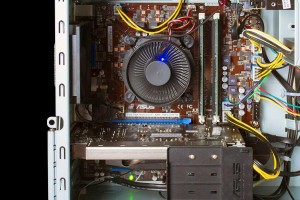 Blog provided by Electric Kitten
Blog provided by Electric Kitten
In an industry with many different web hosting solutions, colocation stands out because of the level of control it provides to data center clients. Like traditional web hosts, colocation providers supply security, power, storage, and other essential amenities for their client’s servers. But unlike shared hosting or cloud-based hosting, clients have full ownership of their servers. They can customize server hardware and software to their heart’s content. However, this also means that clients are responsible for providing their own servers. They cannot use the servers owned by the data center to host their website.
Colocation clients are essentially renting space in a data center, as opposed to paying for web hosting. In light of this, colocation is ideal for businesses that store their servers in their offices. Many companies find that servers take up a lot of office space and require too many employees and resources to secure and maintain. If you’d rather focus on other aspects of your business, you might want to consider outsourcing server storage to a colocation provider.
If you’re looking for colocation or server hosting in Los Angeles, contact Electric Kitten. For almost two decades, they have provided reliable colocation service, along with other web hosting options such as shared hosting and dedicated servers. Their colocation clients will have access to a state-of-the-art SAS-70 facility located in the One Wilshire Building in Los Angeles. Their hi-tech setup will ensure you recover quickly and efficiently from any technical disasters that may happen. For more information, call them today at 877-821-HOST or email them at sales@electrickitten.com.








 Summary: LED and LCD may sound the same, but they are not interchangeable.
Summary: LED and LCD may sound the same, but they are not interchangeable.
 Article Written by:
Article Written by: 
 Article by
Article by 
 Nowadays, there are software and technologies that are being used in different areas, for the sole purpose of making our jobs easier. Of these technologies, EDI is the one that is being used for several purposes such as businesses, medicine and many more. According to
Nowadays, there are software and technologies that are being used in different areas, for the sole purpose of making our jobs easier. Of these technologies, EDI is the one that is being used for several purposes such as businesses, medicine and many more. According to 
 If you’re looking to recommend the appropriate video conferencing requirements, it’s all about paying attention the customer’s overall objectives. Now, there several ways that you can approach video conferencing and the only wrong way that you can go about doing this is to neglect the customer’s needs. Here is some basic knowledge that you should know so you can make the right video conferencing recommendations.
If you’re looking to recommend the appropriate video conferencing requirements, it’s all about paying attention the customer’s overall objectives. Now, there several ways that you can approach video conferencing and the only wrong way that you can go about doing this is to neglect the customer’s needs. Here is some basic knowledge that you should know so you can make the right video conferencing recommendations.